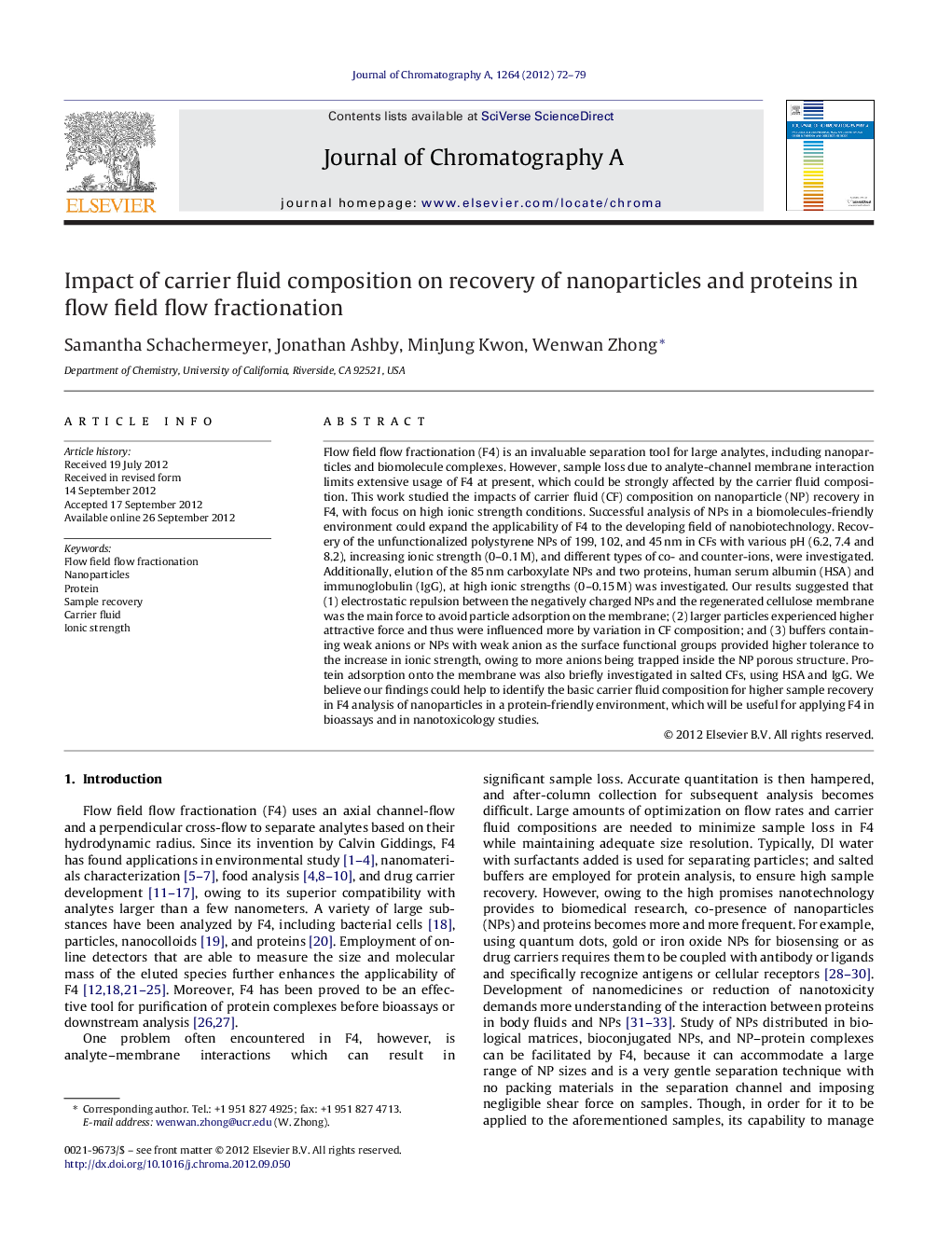| Article ID | Journal | Published Year | Pages | File Type |
|---|---|---|---|---|
| 1202055 | Journal of Chromatography A | 2012 | 8 Pages |
Flow field flow fractionation (F4) is an invaluable separation tool for large analytes, including nanoparticles and biomolecule complexes. However, sample loss due to analyte-channel membrane interaction limits extensive usage of F4 at present, which could be strongly affected by the carrier fluid composition. This work studied the impacts of carrier fluid (CF) composition on nanoparticle (NP) recovery in F4, with focus on high ionic strength conditions. Successful analysis of NPs in a biomolecules-friendly environment could expand the applicability of F4 to the developing field of nanobiotechnology. Recovery of the unfunctionalized polystyrene NPs of 199, 102, and 45 nm in CFs with various pH (6.2, 7.4 and 8.2), increasing ionic strength (0–0.1 M), and different types of co- and counter-ions, were investigated. Additionally, elution of the 85 nm carboxylate NPs and two proteins, human serum albumin (HSA) and immunoglobulin (IgG), at high ionic strengths (0–0.15 M) was investigated. Our results suggested that (1) electrostatic repulsion between the negatively charged NPs and the regenerated cellulose membrane was the main force to avoid particle adsorption on the membrane; (2) larger particles experienced higher attractive force and thus were influenced more by variation in CF composition; and (3) buffers containing weak anions or NPs with weak anion as the surface functional groups provided higher tolerance to the increase in ionic strength, owing to more anions being trapped inside the NP porous structure. Protein adsorption onto the membrane was also briefly investigated in salted CFs, using HSA and IgG. We believe our findings could help to identify the basic carrier fluid composition for higher sample recovery in F4 analysis of nanoparticles in a protein-friendly environment, which will be useful for applying F4 in bioassays and in nanotoxicology studies.
► High repulsive force between NPs and membrane can minimize particle adsorption. ► Weaker anion in solution or on NP surface causes lower NP adsorption at high conc. ► Highly charged counter ions increases NP adsorption on membrane significantly. ► Protein conformation plays an important role in protein–membrane interaction.
